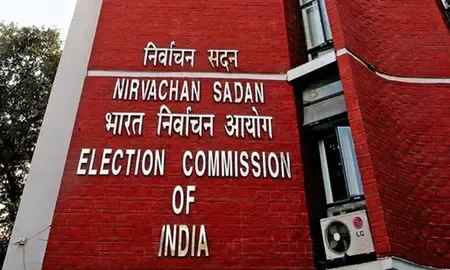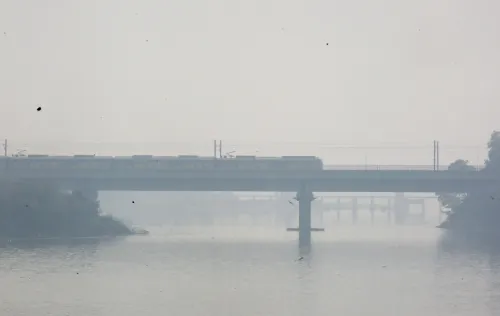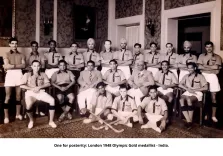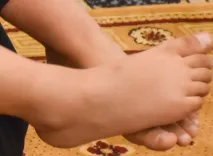Have More Than 43% of Myanmar Refugees in Mizoram Had Their Biometric Details Collected?
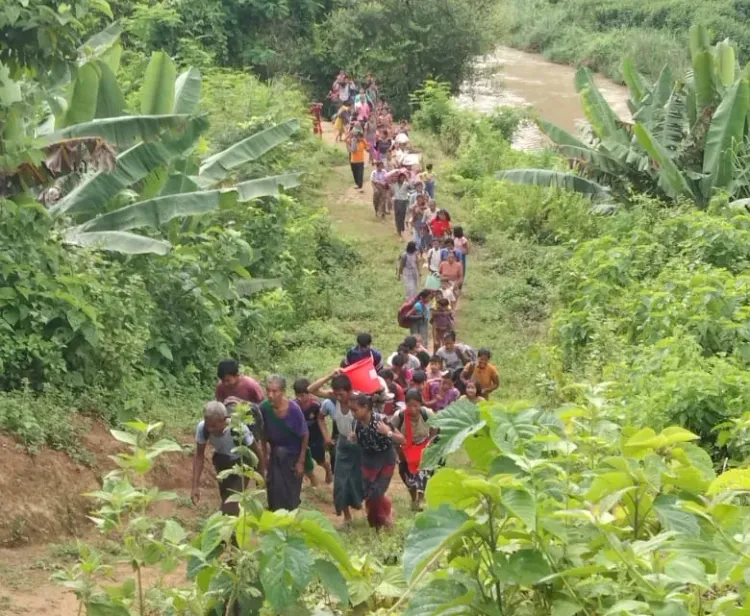
Synopsis
Key Takeaways
- 43.53% of Myanmar refugees in Mizoram have had their biometric data collected.
- Enrollment process initiated in Serchhip and expanded to 10 other districts.
- Challenges include technical issues and unstable internet.
- Approximately 3,000 Bangladeshi migrants are also sheltered in Mizoram.
- Biometric data collection includes biographical details.
Aizawl, Oct 21 (NationPress) Officials in Mizoram have successfully gathered the biometric information of over 43.53% of approximately 31,300 Myanmar refugees who have sought refuge in the northeastern state following their exodus due to the military coup in February 2021, as stated by authorities on Tuesday.
A senior representative from the Mizoram Home Department disclosed that biometric data for about 13,620 out of the total 31,300 refugees has been captured across various districts.
The biometric enrollment initiative for these refugees was first initiated by the Serchhip district administration on July 30, with 10 additional districts later joining the enrollment effort.
Per the guidance from the Ministry of Home Affairs (MHA), the collection of biometric data is being conducted through the Foreigners Identification Portal and the Biometric Enrollment (FIP&BE) system.
While acknowledging that the electronic registration process has encountered several hurdles, such as technical difficulties and inconsistent internet access in remote areas, the official affirmed that district authorities have continued to progress with the enrollment process, albeit at a slower rate.
In addition to the Myanmar refugees, approximately 3,000 migrants from the Chittagong Hill Tracts (CHT) of southeastern Bangladesh have also taken refuge in three districts of Mizoram over the last two years.
The majority of these Bangladeshi refugees, around 2,000, are located in the Lawngtlai district of southern Mizoram, which shares borders with both Myanmar and Bangladesh.
Tribal refugees from Bangladesh have also found shelter in the Lunglei and Serchhip districts.
The official mentioned that the biometric enrollment for Bangladeshi refugees will commence once data collection for the Myanmar refugees is complete.
Both Myanmar and Bangladeshi refugees are currently accommodated in designated camps, as well as with relatives and in rented homes throughout all 11 districts of Mizoram.
The collection of biometric details is more straightforward for refugees residing in camps; however, it poses challenges for those living with relatives or in rented accommodations scattered across numerous villages.
To address this challenge, district authorities have enlisted the assistance of Village Councils and civil society organizations, particularly the Young Mizo Association (YMA), to facilitate the process.
Moreover, the enrollment procedure also entails gathering biographical information such as names, addresses, parents' names, and employment history, both in Myanmar and in Mizoram.
Before launching the biometric data collection, the Mizoram government conducted extensive training for district-level officials to ensure effective collection of biometric and biographical data from the refugees.
In the wake of the military coup in Myanmar in February 2021, refugees, including women and children, have increasingly entered Mizoram seeking safety, with their numbers now totaling around 31,300.
Members of the Bawm community from the CHT in Bangladesh have also been residing in Mizoram for over two years, having fled ethnic violence resulting from a crackdown by the Bangladesh Army.
The Myanmar refugees, primarily from the Chin tribe, share strong ethnic and cultural connections with the predominant Mizo community in Mizoram, while the Bawm — also referred to as Bawmzo — are a small ethnic group primarily inhabiting the CHT of Bangladesh and share similar cultural ties with the Mizos.
Myanmar's Chin state shares a 510 km mountainous border with six districts of Mizoram: Champhai, Siaha, Lawngtlai, Hnahthial, Saitual, and Serchhip, while three districts — Mamit, Lunglei, and Lawngtlai — share a 318 km long border with Bangladesh.

